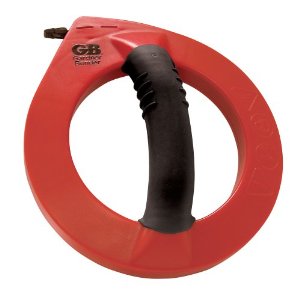Automated LED stair lights
I’ve been hunting for a new project to do ever since completing my contest entry for Robie. I’ve done a number of interesting small things, mainly with the kids, but nothing too big. Then recently Make: Online featured this:
When someone walks on the first step, the LEDs light up in sequence. Aside from looking cool, this is a great safety feature. I have had more than a few times where I have stumbled on stairs in the dark. Although we have convenient overhead lighting for most of them, I can be reluctant to use it, especially if the kids are asleep upstairs.
The only problem with this video is that there are no technical details. There is a website, which features the video, but no information.
There is a stairway LED lighting Instructable with more details. This is a simpler version, and less good from my perspective. The wires are all visible. Only the left side of the stairs is lit. And the artistic delay between lighting each stair is gone. It does provide a basic framework and that is helpful. I have learned that presentation is 80% of the oomph factor in these projects — so, we need to upgrade.
Looking very carefully at the video, we can figure out a few things. The LEDs and the sensor are all on one side of the stairs. Both sides of the stairs appear to be lit because the focused light from one side is bouncing off the white wall. The LEDs are set into metal plates that sit in the wall. There is a sensor that sits on the bottom stair, the same side as the lights; there is no receiver on the other side. The sensor appears to have two openings, which would be consistent with ultrasonic, but I can’t be sure of that. When the sensor is triggered, the stairs light up in sequence. After a fixed amount of time, they turn off in sequence, even if the sensor at the opposite end is not triggered.
I will need to cut into the wall to achieve the same look. I have done this before, but not often. I will also need to run wires in the walls. That, I have never done. In fact, I’ve never seen anyone else do it either. A little research on running wires revealed that the key tool is fish tape, a reel of flexible steel rod that can be guided through the wall with a wire attached. I always like to buy more tools so am now the proud owner of this:
Since I am only dealing with one wall and do not have to go between floors, I think this is a manageable project. My husband was fairly calm about my wanting to put holes in the wall. He suggested that I start with the basement stairs first for practice. A reasonable idea.
The Instructable stairs use two timer chips to operate. I plan to use a microcontroller for nicer effects, probably one of the Arduino Pro Minis that I recently ordered.
Next issue, the sensor. I have a PIR sensor lying around that could be used. I am a little concerned that it will have too broad an angular detection range. I only want the sensor to trigger if someone steps on the bottom stair, not walks in front of it. I could also cannibalize Robie’s PING))) ultrasonic sensor, though running that continuously would probably increase power consumption. (A quick glance at the specs shows PING))) current requirements of 20mA, while PIR is >3mA.) The Instructable uses IR, but that requires elements on both sides of the stairs. I only want to run wires in one wall! The author mentions that IR sensors work well here because they don’t trigger in daylight. That’s a nice feature, and to get it with a different type of sensor I will need either a timer or a photocell. Probably a photocell, that is simpler and I have bags of them lying around from my line-following robot project.
The biggest unknown are the LEDs. I don’t know what model they are. I want them to be powerful enough to give off good illumination and reflection. I would very much like to stay within the world of battery power. If 120V are needed I don’t think I will comfortable running that type of wiring. As it is I will need to learn the applicable electrical code. And, it would be nice if they came in a suitable wall mount. Time to do some research.

sorry to disturb. I want you cant help me make project Automated LED stair lights
thanks